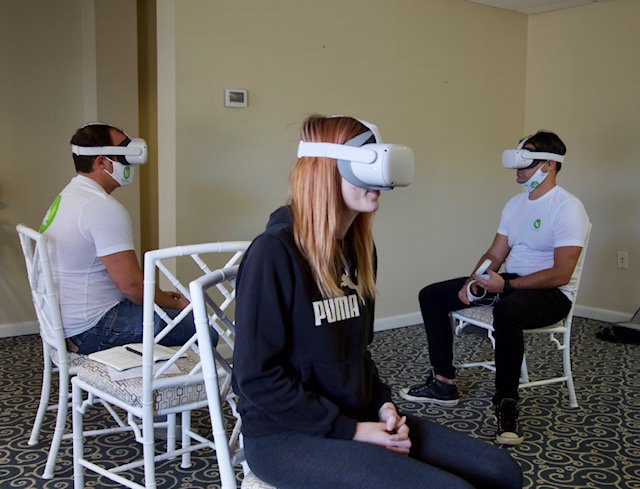
Gamification Of Education
Our e-learning process employs Virtual Reality (VR), a technology which enables our youth to “learn by doing” and promotes a child’s sensory recall, memory, and critical thinking.
Specialized SEL E-Learning program through our WonderSeed App and online portal.
E-Learning
E-Learning
is substantially more fun and engaging than traditional methods.
E-Learning
E-Learning
allows the neurotransmitters to send signals between neurons.
E-Learning
E-Learning
releases endorphins that improve the retention of information.
E-Learning
is substantially more fun and engaging than traditional methods.
E-Learning
allows the neurotransmitters to send signals between neurons.
E-Learning
releases endorphins which improves retention of information.

Virtual Reality
Our virtual reality and e-learning process enables our youth to “learn by doing” and promotes a child’s sensory recall, memory, and critical thinking.
- VR has a positive effect on students’ knowledge, attitudes, self-efficacy, and behavioral intentions.
- VR allows researchers to immerse students into environments of alcohol/drug consumption and risk-taking without the physical dangers that these behaviors may lead to in real life.
- VR can simulate a ‘learning by doing’ approach for sensitive topics and illegal behaviors, which could otherwise not be brought into classrooms.
- VR offers the potential to build learning experiences that transcend conventional information delivery methods.
Benefits Of VR
The Storytelling of Virtual Reality(VR)

Combining Storytelling with multi-sensory effects of VR technology will undoubtedly optimize the user’s ability to retain pertinent information and tools that will assist them to address critical social issues affecting our youth today. Its a lies in becoming an alternative way to engage students through enhancement to the physical classroom.
It is not designed to be a replacement. VR is just as much about giving students the opportunity to create a simulated digital world as it is blending the real world and artificial reality together. The uses of digital reality are obvious when thinking of its wow factor but beyond its surface of recreational capabilities research has shown that it can be most beneficial when used in an instructional environment.
VR is the next big step forward in education which will be excellent for educators and studaents alike. Educators will be able to capture the attention of their students like never before and get them more actively involved in the classroom.
The Storytelling VR technology can provide enriched learning environments for students who otherwise may not respond to traditional educational methods. It has the proficiency to deliver countless new immersion concentrations to assist in lesson plans. Research consistently shows that we are moving away from simply ‘learning’ a subject or topic to ‘feeling’ the content.
Students are always trying to do what’s cool and what’s new; utilizing VR technology in classrooms will appeal to students because it’s the latest and greatest thing, and it’s very cool to use. Storytelling VR technology will transcend the antiquated delivery of information seen in our schools today, and improve comprehensive retention in the different types of learners (visual, auditory, and kinesthetic).


